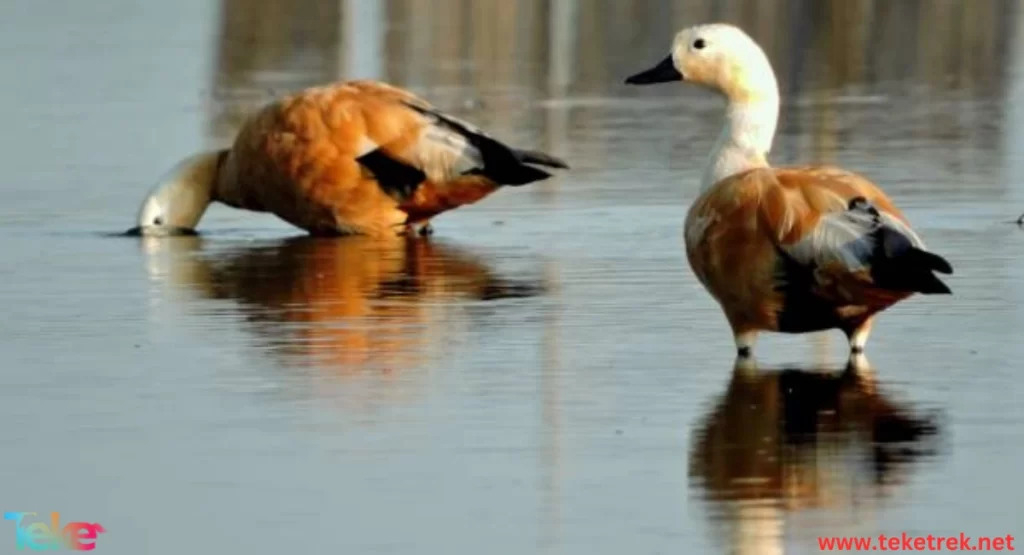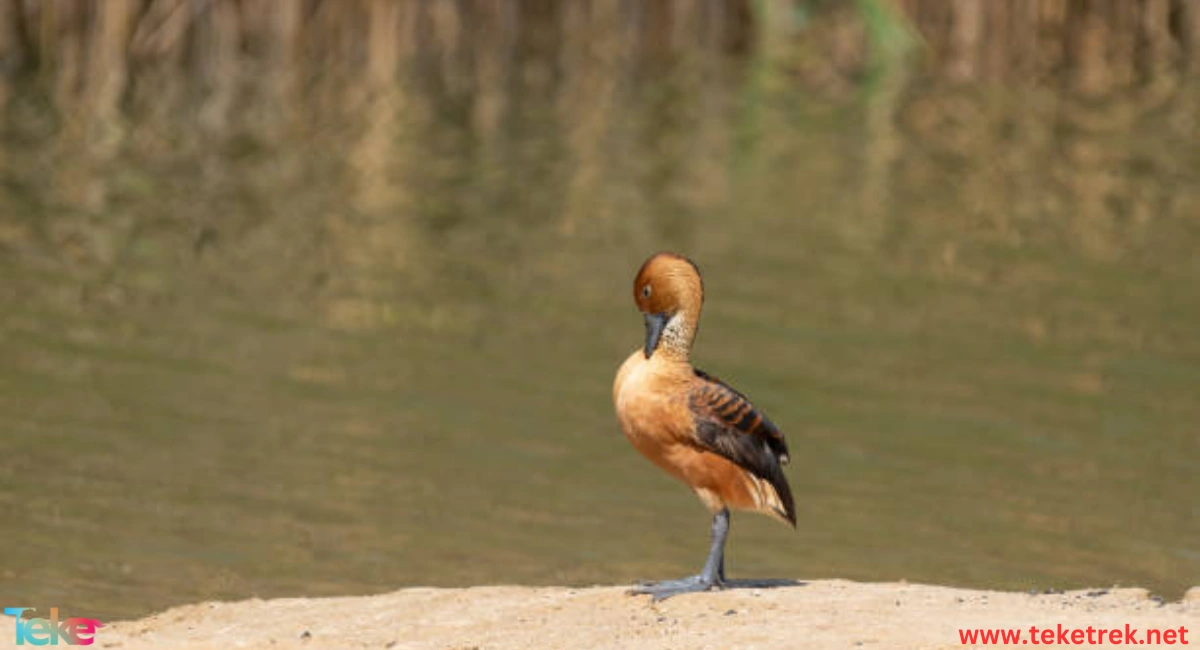The Fulvous whistling duck is a slender bird that inhabits shallow wetlands, found in tropical regions across Africa, Asia, and the Americas. It is known for its tendency to migrate hundreds of miles in wandering flocks.
In this article in TekeTrek Website, we will introduce you to the most important information related to this object. Follow along with us.
Volvos whistling duck habitat
The Fulvous whistling duck is an Amphibian animal that thrives in various environments. It prefers shallow wetlands with abundant tall grass and other plants. You can find the Fulvous whistling duck in freshwater lakes, seasonal freshwater ponds, slow-flowing pools, marshland areas, as well as swamps in flat open lands and water-submerged grassy lands, often in wet rice cultivation areas.
Fulvous whistling ducks are also found in California, eastern Canada, Florida, the central Atlantic Ocean, the plains, as well as the southeastern and southwestern regions, including Texas.

What are the characteristics of the Fulvous Whistling Duck?
- The scientific name for the Fulvous Whistling Duck is Dendrocygna bicolor, and its genus is Dendrocygna.
- The Fulvous Whistling Duck belongs to the class Aves, order Anseriformes, and family Anatidae.
- The length of the Fulvous Whistling Duck ranges from 46 to 53 cm. It is characterized by its candy-colored plumage with a gray bill, long neck, and a white stripe on both sides.
- During flight, the underside of the wings of the Fulvous Whistling Duck appears black with a white crescent on top. The rounded and short tail contrasts with this.
The diet of the Fulvous Whistling Duck
The Fulvous Whistling Duck is primarily herbivorous, but it may consume some small insects, with seeds comprising the majority of its diet. Its diet consists of over 95% plant-based materials, primarily seeds of plants and aquatic grasses, including paspalum, wild rice, as well as smartweeds, among others.
Additionally, this duck also consumes a small number of aquatic insects.
The life cycle of the Fulvous Whistling Duck
- The life cycle of the Fulvous Whistling Duck begins from an egg, like most birds. A female Fulvous Whistling Duck typically lays 12-14 white eggs, which become spotted in the nest. Females may lay eggs in communal nests, which can contain “dump nests” with more than 60 eggs.
- The incubation period ranges from 24 to 26 days, and eggs may be left unattended for hours on warm days until hatching approaches.
- Ducklings are proficient swimmers and divers, cared for by their parents but also capable of finding food on their own. They start growing small feathers at around two months old.
- Once mature, Fulvous Whistling Ducks may mate for life. During courtship, pairs or groups of ducks may fly in large circles with twisting and turning. Nests are typically located on the ground near water or directly above water in dense marshes. The nests are woven from grass, sedges, and rushes, without any added down feathers like many other waterfowl.
- Fulvous Whistling Ducks are social birds, gathering in small family groups. They are active both day and night but do most of their feeding in the early hours after dawn or in the evening before sunset.


Migration and Wintering of Fulvous Whistling Ducks
- Most Fulvous Whistling Ducks leave Louisiana and Texas in the fall and spend the winter along the eastern coast of Mexico.
- It’s assumed that the smaller populations breeding in southern California and Arizona winter along the western coast of Mexico, while those in Florida are non-migratory. In newer tropical areas, Fulvous Whistling Ducks are widely distributed, but they are generally rare from northern Caribbean southwards to eastern Peru, eastern Bolivia, and northern Argentina.
FAQ
- What is the average lifespan of a Fulvous Whistling Duck?
The average lifespan of a Fulvous Whistling Duck is 20 years.
- What does a Fulvous Whistling Duck eat?
Fulvous Whistling Ducks feed on seeds of aquatic plants and grasses, including paspalum, wild rice, and sedges.
- Where is Fulvous Whistling-Ducks?
Fulvous Whistling Ducks are found in Louisiana, Texas, and along the eastern coast of Mexico during winter. They also inhabit southern California, Arizona, Florida, and newer tropical areas but are generally rare in the northern Caribbean, eastern Peru, eastern Bolivia, and northern Argentina.
- What is the difference between a lesser whistling duck and a fulvous whistling duck?
The main difference is in their appearance and distribution: Lesser Whistling Ducks are smaller with grayish-brown plumage and are found in Asia, Africa, and Oceania, while Fulvous Whistling Ducks are larger with reddish-brown plumage and are found in the Americas.
- Why are they called whistling-ducks?
Whistling ducks are named for the distinctive whistling sound they make, which is produced by their unique vocalizations during flight and other activities. This sound is often described as a high-pitched, musical whistle, hence the name “whistling ducks.”
In recent decades, Fulvous Whistling Duck populations have declined in the southwest while fluctuating in the southeast. Rice cultivation has impacted this duck species, and its effect on rice cultivation is controversial as it can either damage crops or primarily feed on harmful weed seeds that grow in rice fields.






